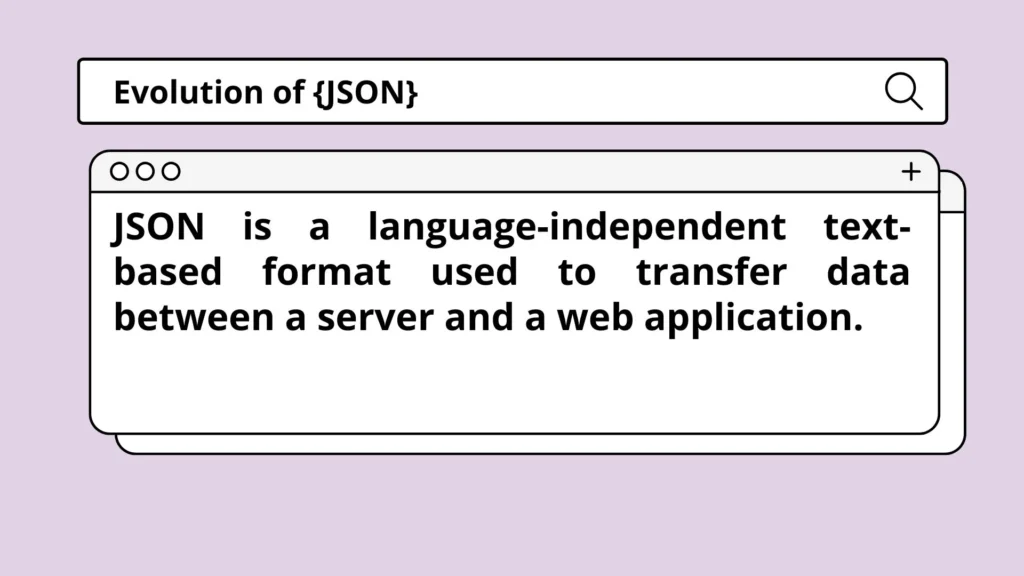Evolution of JSON
JSON evolved to simplify data exchange.

In this blog we will look into
Why was JSON invented and how did it take over the XML?
JSON (JavaScript Object Notation) was invented to provide a lightweight, easy-to-read format for data exchange between web clients and servers. It emerged in the early 2000s as a simpler alternative to XML, which was commonly used for data interchange but was more verbose and complex to parse. Since JSON is based on JavaScript syntax, it naturally integrates with web technologies, making it easy for developers to work with, especially in browser environments. Its simplicity, human-readable structure, and ease of parsing by machines have made JSON a standard for APIs, data storage, and communication across a wide range of programming languages, promoting interoperability and efficiency.
Some of the key innovations that have shaped the future of JSON
JSON Schema: This powerful specification allows developers to define the structure and validation rules for JSON data, ensuring consistency and reliability across applications. With JSON Schema, developers can create robust, self-documenting APIs and data models, streamlining the development process and reducing the risk of data-related errors.
JSON Patches: Introduced as a way to efficiently update and modify JSON data, JSON Patches enable developers to make targeted changes to specific parts of a JSON document, without the need to replace the entire structure. This feature has become essential for real-time data synchronization and incremental updates, optimizing network bandwidth and improving overall system performance.
JSON-LD: The JSON for Linked Data (JSON-LD) specification has revolutionized the way structured data is represented and shared on the web. By leveraging the power of Linked Data principles, JSON-LD allows for the seamless integration of data from multiple sources, enabling more intelligent and interconnected applications.
JSON Pointer: This simple yet effective mechanism provides a standardized way to reference and navigate within JSON documents, making it easier to access and manipulate specific elements of complex data structures. JSON Pointer has become an indispensable tool for developers working with dynamic and hierarchical JSON data.
JSON Hyper-Schema: Building upon the foundations of JSON Schema, JSON Hyper-Schema introduces a way to describe the hypermedia controls and links within a JSON document. This advancement enables the creation of self-describing and self-navigating APIs, empowering developers to build more intuitive and user-friendly applications.
As the digital landscape continues to evolve, the innovations in the JSON ecosystem will undoubtedly play a crucial role in shaping the future of data management, integration, and application development. By embracing these advancements, developers can harness the full potential of JSON, unlocking new possibilities and driving the next generation of data-driven solutions.